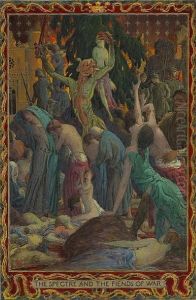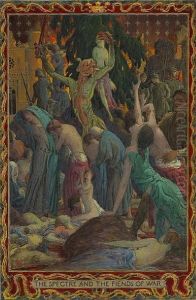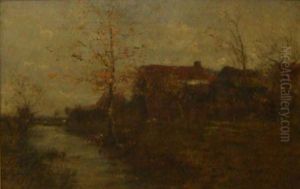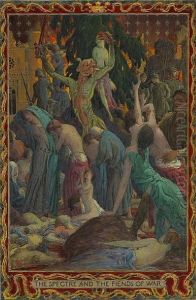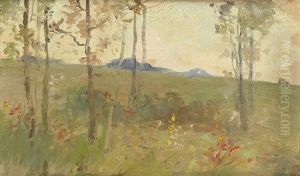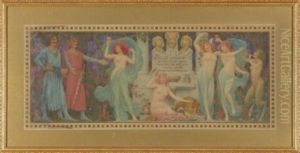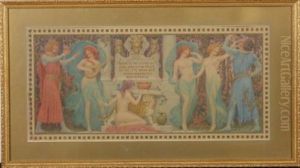Charles Holloway Paintings
Charles Edward Holloway was a British artist born in 1838, known for his remarkable work as a painter and illustrator. His contributions to the Victorian art scene were significant, as he skillfully navigated the realms of landscape and marine painting, capturing the essence of the British countryside and its coastal areas with a delicate and precise touch. Holloway's education and early influences played a crucial role in shaping his artistic direction. Though detailed records of his early education are sparse, it is known that Holloway was part of the vibrant Victorian art world, a period marked by a rich diversity of artistic expressions and the emergence of new art movements.
Holloway's work was characterized by its attention to detail, atmospheric effects, and a strong sense of place. He had a particular talent for depicting the mood of the sea and sky, often portraying the changing weather conditions and the dramatic interplay of light and shadow. His landscapes and seascapes conveyed a deep appreciation of nature's beauty and power, resonating with viewers and earning him recognition among his contemporaries.
Throughout his career, Holloway participated in numerous exhibitions, showcasing his work alongside other notable artists of the time. His paintings were exhibited at prestigious venues such as the Royal Academy and the British Institution, reflecting his status as a respected member of the British art community. Despite his success, Holloway remained dedicated to his craft, continuously exploring new techniques and subjects to capture in his art.
Charles Edward Holloway's legacy is preserved through his contributions to British landscape and marine painting. His ability to evoke emotion and convey the sublime aspects of nature has ensured his place in the annals of British art history. Holloway passed away in 1897, leaving behind a body of work that continues to be admired for its beauty, technical skill, and artistic sensitivity.
